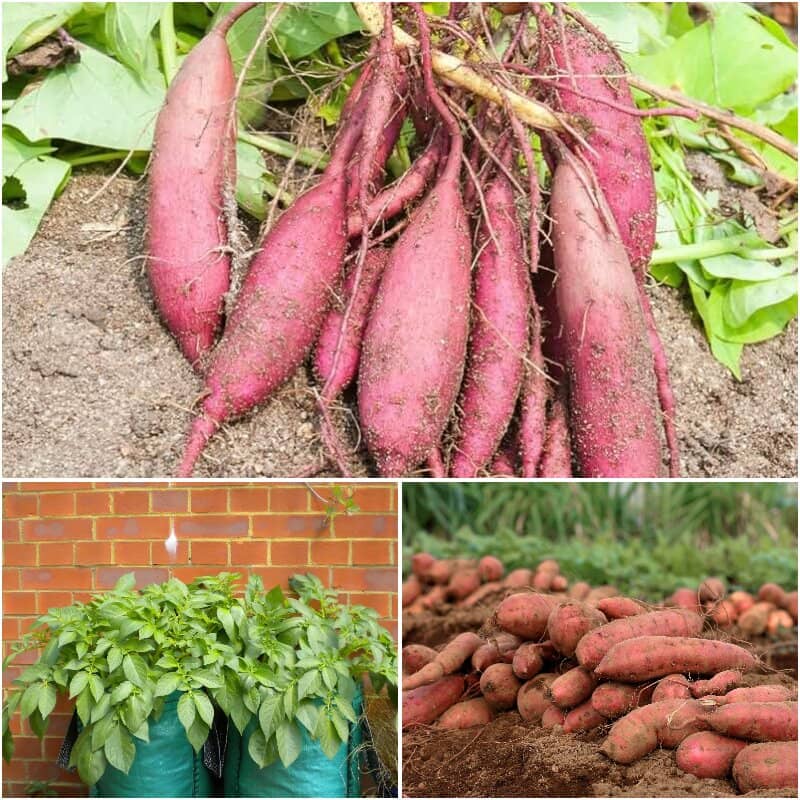If you’re looking to add a nutritious and delicious crop to your garden, sweet potatoes are an excellent choice. Known for their rich, sweet flavor and impressive health benefits, sweet potatoes are a rewarding plant to grow. But how exactly can you achieve a bountiful harvest? In this article, we will explore how to grow sweet potatoes from start to finish, covering everything from ideal growing conditions to harvesting and pest management. Whether you’re a seasoned gardener or a novice looking to try something new, understanding how to grow sweet potatoes effectively will ensure you enjoy the full potential of this versatile vegetable. Let’s dive into the essential steps for cultivating your own sweet potato crop and reaping the delicious rewards.
How to Grow Sweet Potatoes
Sweet potatoes, with their rich, sweet flavor and nutritious value, are a fantastic addition to any garden. Here’s a step-by-step guide to help you grow these delicious tubers successfully.
Ideal Growing Conditions
To grow healthy sweet potatoes, start by ensuring they have the right environment. Sweet potatoes flourish in sunny vegetable gardens, requiring full sun to thrive. These warm-season crops need between 85 to 120 days to mature fully. They are quite resilient, handling heat and drought effectively. However, they’re sensitive to frost. To avoid frost damage, plant them three to four weeks after the last frost when the soil has warmed sufficiently.
Preparing the Soil
For optimal growth, sweet potatoes benefit from well-prepared soil. Although they can tolerate less-than-ideal soil conditions, creating long, wide ridges about 10 inches high and 3½ feet apart will significantly boost their development. Enrich the soil with plenty of compost to provide essential nutrients. However, steer clear of nitrogen-rich fertilizers, which may encourage excessive vine growth at the expense of tuber development. In cooler northern climates, covering the raised beds with black plastic can help retain warmth and foster stronger growth.
Planting Sweet Potato Slips
Sweet potatoes are propagated from slips—young shoots that sprout from mature sweet potato roots. About six weeks before the outdoor planting season, prepare the slips by placing the roots in a box of moist sand, sawdust, or chopped leaves in a warm location (75 to 80 degrees Fahrenheit). Once the shoots are 6 to 9 inches long, cut them from the root and remove the bottom inch of each slip. Plant these slips in full sun, making holes about 6 inches deep and 12 inches apart. Bury the slips up to the top leaves, press the soil gently around them, and water thoroughly.
Here’s a detailed guide on how to cut and prepare sweet potato slips for planting.
To grow sweet potatoes, you’ll need to start with slips—rooted sprouts that grow from the sweet potato tuber. Here’s how to cut sweet potato slips for planting:
Preparing Materials
To start, gather the following items:
- Organic Sweet Potatoes: Either from a seed company or store-bought.
- A Strong Knife: For slicing the tubers.
- A Cutting Board: To safely cut the potatoes.
- An Aluminum Baking Tray with a Cover: For growing the slips.
- Organic Seed Starter Mix: To support slip development.
Slicing the Tubers
Begin by slicing each sweet potato lengthwise into halves using a sturdy knife. Place the cut side down on the seed starter mix in the tray. Then, cover the potato halves with a bit more of the mix, ensuring they are partially buried.
Creating Ideal Conditions
Cover the tray with a plastic top to maintain humidity while allowing some air circulation. Position the tray under grow lights or near a sunny window. For faster growth, you may use a heating mat, although this step is optional.
Growing the Slips
After 2 to 3 weeks, you’ll start to see reddish sprouts emerging from the potato halves. At this stage, remove the plastic cover and keep the tray consistently moist. As the slips develop several green leaves and roots, they are ready for removal.
Removing the Slips
Carefully detach the slips from the tuber. You can either twist them off or slice them, ensuring each slip has some roots and a small piece of potato attached. This method helps prevent breakage and promotes healthy growth.
Planting the Slips
Once the last frost date has passed, plant the slips directly into your garden. If it’s still too cold outside, you can keep the slips in small pots under grow lights until the weather warms up.
Growing in Containers
Don’t have garden space? No problem! Sweet potatoes can also be grown in containers. Choose a container that holds 15 to 20 gallons of soil. Begin with a layer of soil about four inches deep, place the slips on top, and cover them with an additional three inches of soil. This method is perfect for those with limited garden space or for growing sweet potatoes on patios or balconies.
Mulching and Watering
Proper mulching and watering are crucial for healthy sweet potato plants. If you’re not using black plastic, mulch the vines two weeks after planting to suppress weeds, retain moisture, and keep the soil loose. Occasionally lift longer vines to prevent them from rooting at the joints, which can lead to undersized tubers. During dry periods, water the plants weekly but reduce watering two weeks before harvest to allow the tubers to mature properly.
Harvesting Sweet Potatoes
How do you harvest sweet potatoes? or How many days to harvest sweet potatoes? Knowing when to harvest is key to getting the best yield. Sweet potatoes are ready to be harvested when the leaves start to yellow or after frost has blackened the vines. On a dry, sunny day, use a spading fork to gently lift the tubers from the soil. Allow them to dry in the sun for several hours. Then, cure them in a warm, humid environment (85 to 90 degrees Fahrenheit) for 10 to 15 days. Proper curing enhances the sweetness and storage quality. Store the cured tubers in a cool, dry place with around 55 degrees Fahrenheit and 75 to 80% humidity for several months.
Managing Pests and Diseases
Sweet potatoes can be susceptible to various pests and diseases, including sweet potato weevils, black rot, stem rot, white rust, whiteflies, and flea beetles. Combat these issues by using disease-resistant slips, practicing crop rotation, and applying appropriate treatments like insecticidal soap or row covers. Regular monitoring and timely intervention can help maintain the health of your plants and ensure a bountiful harvest.
Growing sweet potatoes is a rewarding endeavor that can yield delicious and nutritious results. By following these guidelines, you can cultivate a thriving crop and enjoy the many benefits of homegrown sweet potatoes.


